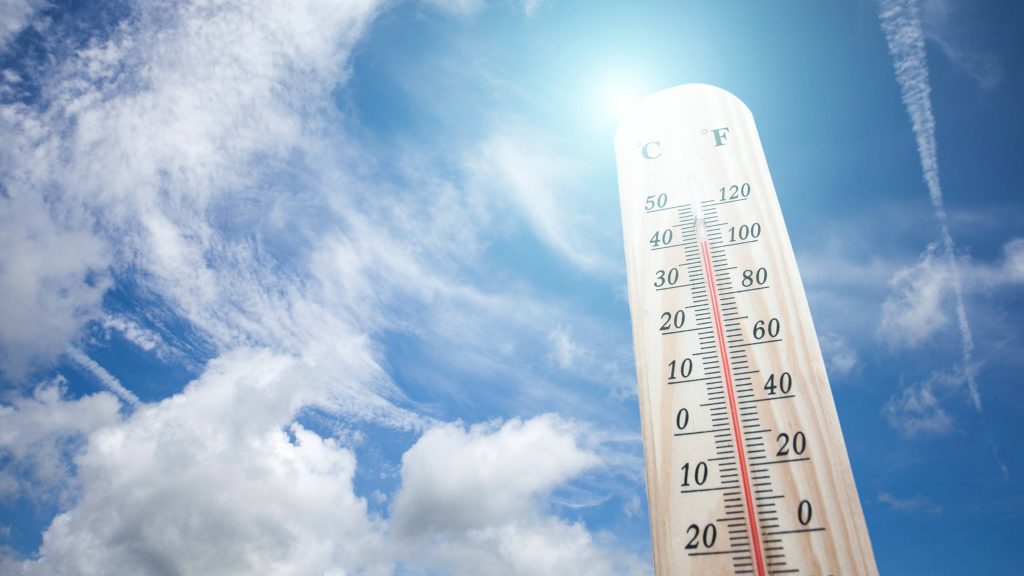
When the weather is blistering hot, Dr. David Claypool, a Mayo Clinic emergency medicine physician, says you need to listen to your body.
"What starts out as heat cramps can quickly move to heat exhaustion and then heatstroke when the body loses the ability to regulate and cool itself down," says Dr. Claypool. He adds a reminder that people should begin the day hydrated and keep hydrating. Dr. Claypool says if you feel hot but develop chills, that's a clear sign you need to slow down and seek cool air or water.
Heatstroke is a condition caused by your body overheating, usually as a result of prolonged exposure to or physical exertion in high temperatures. This most serious form of heat injury, heatstroke, can occur if your body temperature rises to 104 Fahrenheit (40 Celsius) or higher.
Heatstroke requires emergency treatment. Untreated heatstroke can quickly damage your brain, heart, kidneys and muscles. The damage worsens the longer treatment is delayed, increasing your risk of serious complications or death.
Heatstroke signs and symptoms include:
- High body temperature. A core body temperature of 104 Fharenheit (40 Celsius) or higher, obtained with a rectal thermometer, is the main sign of heatstroke.
- Altered mental state or behavior. Confusion, agitation, slurred speech, irritability, delirium, seizures and coma can all result from heatstroke.
- Alteration in sweating. In heatstroke brought on by hot weather, your skin will feel hot and dry to the touch. However, in heatstroke brought on by strenuous exercise, your skin may feel dry or slightly moist.
- Nausea and vomiting. You may feel sick to your stomach or vomit.
- Flushed skin. Your skin may turn red as your body temperature increases.
- Rapid breathing. Your breathing may become rapid and shallow.
- Racing heart rate. Your pulse may significantly increase because heat stress places a tremendous burden on your heart to help cool your body.
- Headache. Your head may throb.
If you think a person may be experiencing heatstroke, seek immediate medical help. Call 911 or your local emergency services number.
Take immediate action to cool the overheated person while waiting for emergency treatment.
- Get the person into shade or indoors.
- Remove excess clothing.
- Cool the person with whatever means available — put in a cool tub of water or a cool shower, spray with a garden hose, sponge with cool water, fan while misting with cool water, or place ice packs or cold, wet towels on the person's head, neck, armpits and groin.
Heat exhaustion is one of the heat-related syndromes. Symptoms range in severity from mild heat cramps to heat exhaustion to potentially life-threatening heatstroke. Heat exhaustion can begin suddenly or over time, usually after working or playing in the heat, perspiring heavily, or being dehydrated.
Heat exhaustion signs and symptoms include:
- Cool, moist skin with goose bumps when in the heat
- Heavy sweating
- Faintness
- Dizziness
- Fatigue
- Weak, rapid pulse
- Low blood pressure upon standing
- Muscle cramps
- Nausea
- Headache
If you think you're experiencing heat exhaustion:
- Stop all activity and rest
- Move to a cooler place
- Drink cool water or sports drinks
Contact your health care provider if your signs or symptoms worsen or if they don't improve within one hour. If you are with someone showing signs of heat exhaustion, seek immediate medical attention if he or she becomes confused or agitated, loses consciousness, or is unable to drink. You will need immediate cooling and urgent medical attention if your core body temperature (measured by a rectal thermometer) reaches 104 Fahrenheit (40 Celsius) or higher.
Learn more in these related posts:
- Heat and exercise: Keeping cool in hot weather
- Mayo Clinic Minute: The dangers of heat-related illnesses
- Mayo Clinic Minute: Stroke and heat concerns
- Heatstroke prevention tips - Mayo Clinic Health System
This article is written by Mayo Clinic staff. Find more health and medical information on mayoclinic.org.







